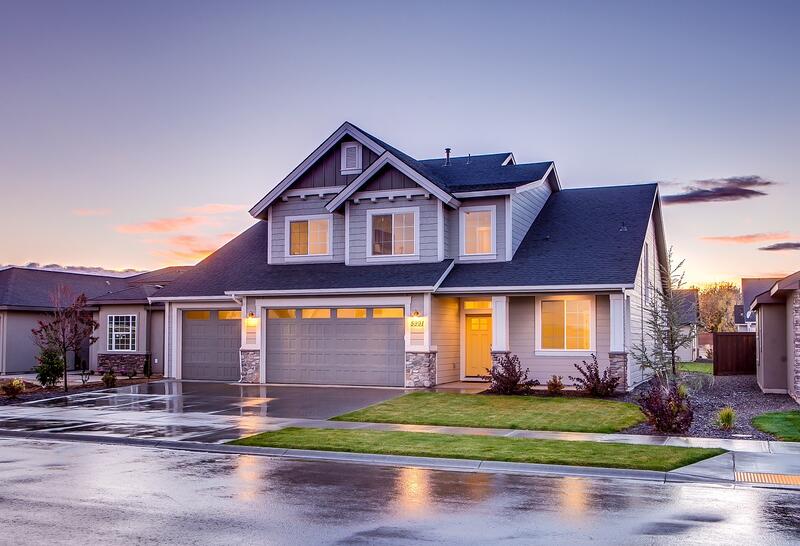Decarbonization Pathways for Construction of residential and non-residential buildings: An Analysis
This article analyzes decarbonization pathways for constructing residential and non-residential buildings, highlighting the importance of reducing carbon emissions in the construction industry.

The construction of residential and non-residential buildings is a significant contributor to global carbon emissions. According to the International Energy Agency (IEA), the building sector accounts for approximately 40% of global energy consumption and 33% of greenhouse gas emissions. Decarbonisation in the construction industry is, therefore, crucial in mitigating the effects of climate change. This article discusses decarbonisation in the construction of residential and non-residential buildings sector, its importance, the main sources of carbon emissions, how to reduce carbon emissions, the challenges facing decarbonisation, and the implications of decarbonisation for the construction industry.
What is Decarbonisation in "Construction of Residential and Non-Residential Buildings" Sector and Why is it Important?
Decarbonisation refers to the process of reducing carbon emissions from various sectors of the economy, including the construction of residential and non-residential buildings. It involves the use of low-carbon technologies, renewable energy sources, and energy-efficient building designs to reduce the carbon footprint of buildings. Decarbonisation is important because the construction industry is a significant contributor to global carbon emissions, and reducing these emissions is crucial in mitigating the effects of climate change. Additionally, decarbonisation can lead to cost savings, increased energy efficiency, and improved indoor air quality.
Main Sources of Carbon Emissions in "Construction of Residential and Non-Residential Buildings" Sector
The main sources of carbon emissions in the construction of residential and non-residential buildings sector include:
- Energy consumption: Buildings consume a significant amount of energy for heating, cooling, lighting, and ventilation. The use of fossil fuels for energy generation results in the release of carbon dioxide into the atmosphere.
- Embodied carbon: Embodied carbon refers to the carbon emissions associated with the production, transportation, and disposal of building materials. The manufacturing of materials such as steel, cement, and glass produces significant amounts of carbon emissions.
- Operational carbon: Operational carbon refers to the carbon emissions associated with the use of buildings, including energy consumption and water usage.
- Transportation: The transportation of building materials and workers to and from construction sites results in carbon emissions.
How Can We Reduce Carbon Emissions in "Construction of Residential and Non-Residential Buildings" Sector?
Several strategies can be employed to reduce carbon emissions in the construction of residential and non-residential buildings sector. These include:
- Energy-efficient building designs: Buildings can be designed to be more energy-efficient, reducing the amount of energy required for heating, cooling, lighting, and ventilation. This can be achieved through the use of passive design strategies, such as orientation, shading, and insulation, and the use of energy-efficient building materials.
- Renewable energy sources: Buildings can be powered by renewable energy sources such as solar, wind, and geothermal energy, reducing the reliance on fossil fuels.
- Low-carbon materials: The use of low-carbon materials, such as timber, bamboo, and recycled materials, can reduce the embodied carbon of buildings.
- Energy-efficient appliances: The use of energy-efficient appliances, such as LED lighting and low-flow water fixtures, can reduce operational carbon emissions.
- Green transportation: The use of green transportation, such as electric vehicles and public transportation, can reduce carbon emissions associated with transportation to and from construction sites.
What are the Challenges Facing Decarbonisation in "Construction of Residential and Non-Residential Buildings" Sector?
Several challenges face decarbonisation in the construction of residential and non-residential buildings sector. These include:
- Cost: The adoption of low-carbon technologies and energy-efficient building designs can be expensive, making it challenging for developers to invest in these technologies.
- Lack of awareness: Many developers and builders are not aware of the benefits of decarbonisation or the strategies available to reduce carbon emissions.
- Regulatory barriers: Regulations and building codes may not incentivize or require the adoption of low-carbon technologies and energy-efficient building designs.
- Supply chain challenges: The supply chain for low-carbon materials and renewable energy sources may not be well-established, making it challenging to source these materials.
- Skills shortage: There may be a shortage of skilled workers capable of designing and constructing energy-efficient buildings.
What are the Implications of Decarbonisation for "Construction of Residential and Non-Residential Buildings" Sector?
Decarbonisation has several implications for the construction of residential and non-residential buildings sector. These include:
- Increased demand for low-carbon materials and renewable energy sources: As the demand for low-carbon buildings increases, there will be a corresponding increase in demand for low-carbon materials and renewable energy sources.
- Increased investment in energy-efficient building designs: Developers and builders will need to invest in energy-efficient building designs to meet regulatory requirements and consumer demand.
- Improved indoor air quality: Energy-efficient buildings can improve indoor air quality by reducing the amount of outdoor air pollutants that enter the building.
- Cost savings: Energy-efficient buildings can lead to cost savings in the long run through reduced energy consumption and maintenance costs.
Conclusion
Decarbonisation in the construction of residential and non-residential buildings sector is crucial in mitigating the effects of climate change. The main sources of carbon emissions in the sector include energy consumption, embodied carbon, operational carbon, and transportation. Strategies to reduce carbon emissions include energy-efficient building designs, renewable energy sources, low-carbon materials, energy-efficient appliances, and green transportation. However, several challenges face decarbonisation, including cost, lack of awareness, regulatory barriers, supply chain challenges, and skills shortage. The implications of decarbonisation for the construction industry include increased demand for low-carbon materials and renewable energy sources, increased investment in energy-efficient building designs, improved indoor air quality, and cost savings.